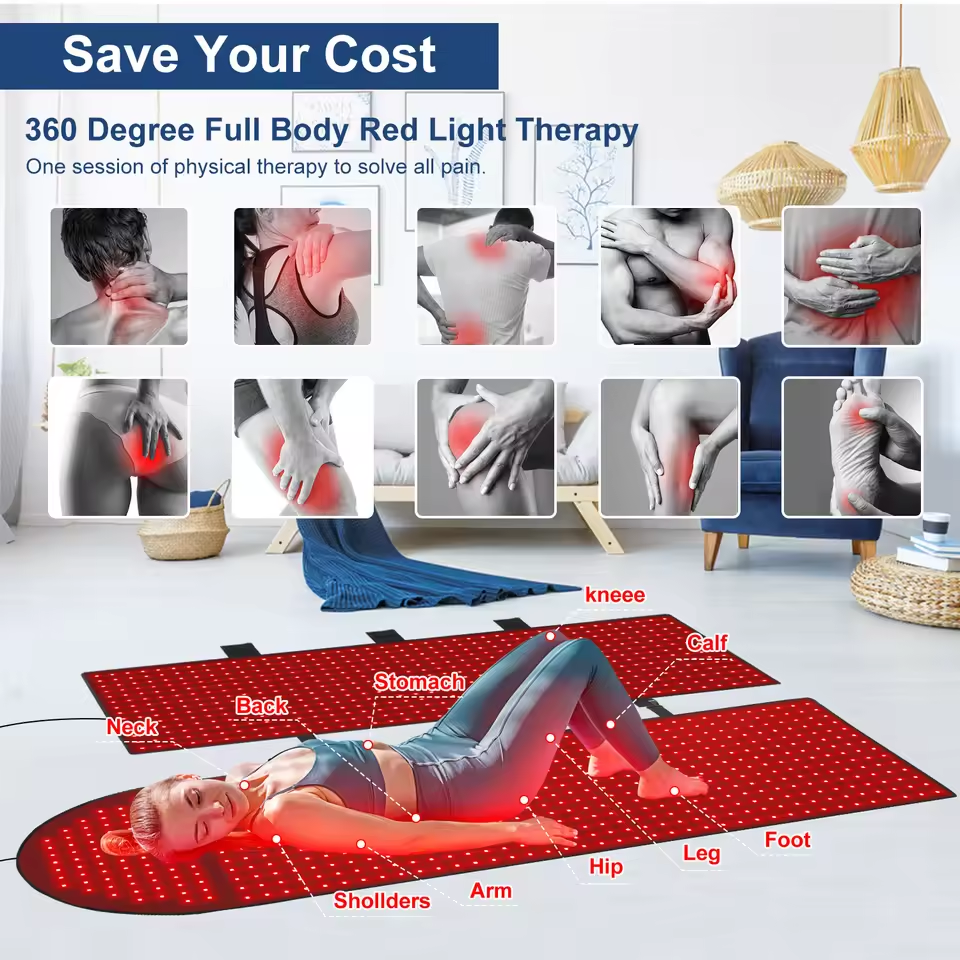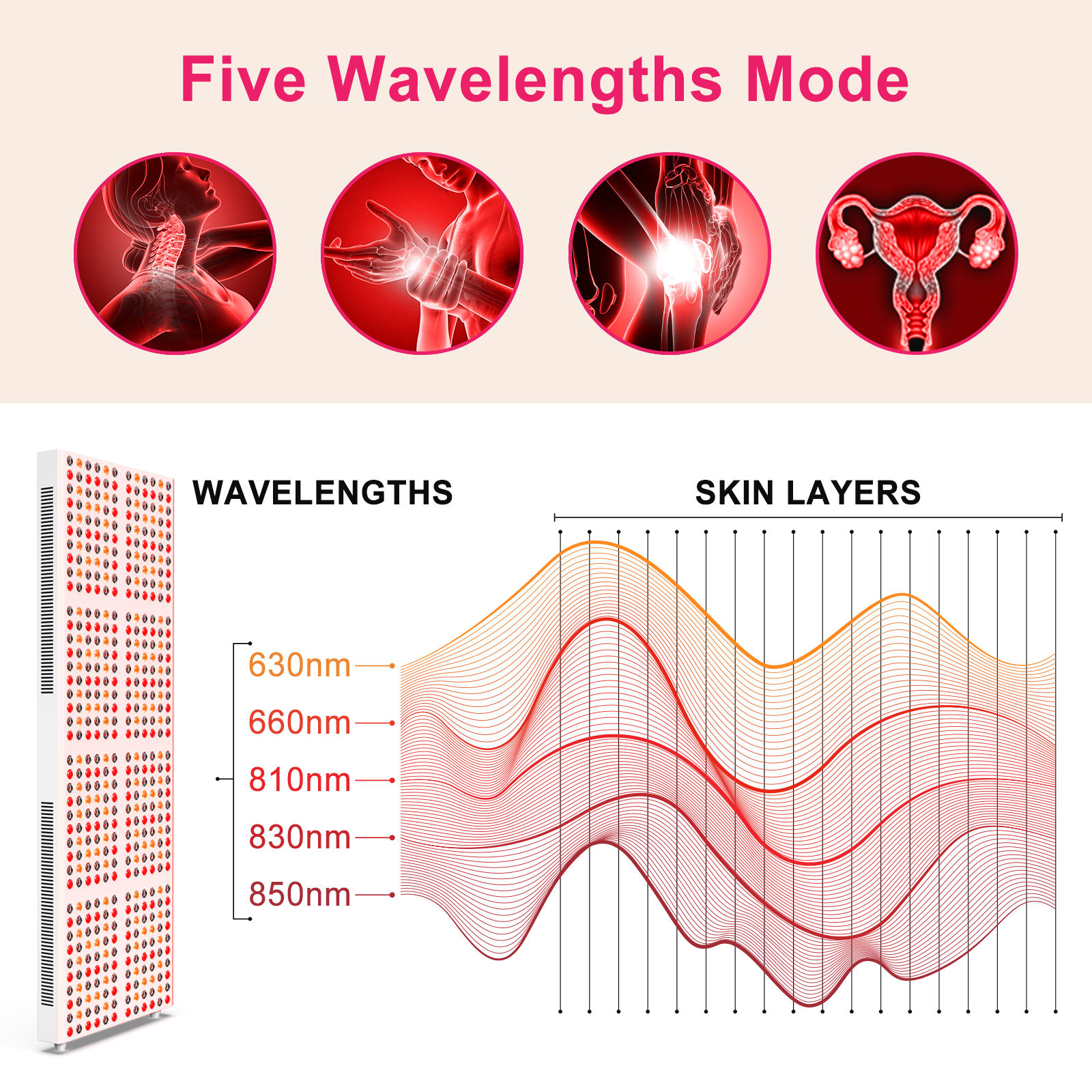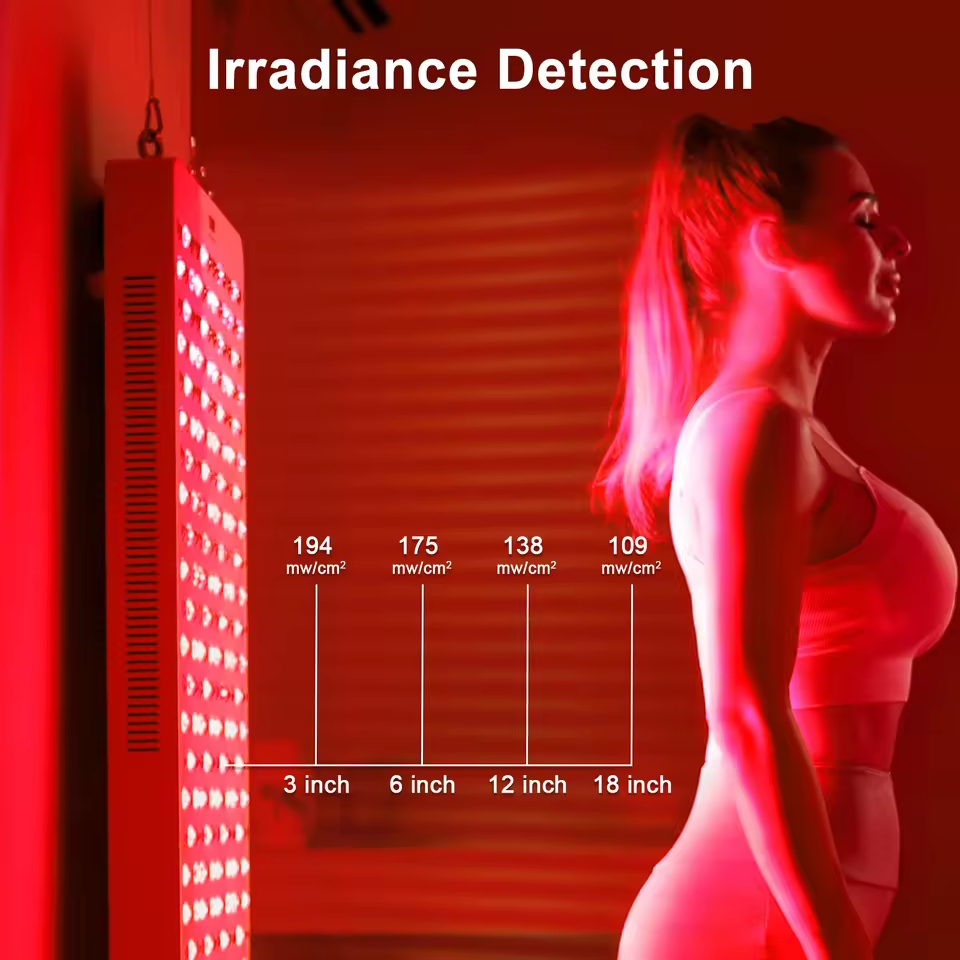Red light therapy is FDA approved
In recent years, red light therapy has gained significant attention for its potential health benefits. This non-invasive treatment has been embraced by wellness enthusiasts and medical professionals alike. But what makes it so special? One of the key reasons for its widespread acceptance is that red light therapy is FDA approved. In this article, we’ll delve into what red light therapy is, its benefits, and why FDA approval is a game-changer.
Red light therapy, sometimes called low-level laser therapy (LLLT), involves exposing the skin to low levels of red or near-infrared light. Unlike ultraviolet light, which can damage the skin, red light is safe and non-destructive. The therapy is typically administered through LED devices, which can be used at home or in professional settings.
The Science Behind Red Light Therapy
The light penetrates the skin and is absorbed by the cells, stimulating energy production and promoting healing. This process is believed to enhance cellular function, leading to various health benefits. Cells in the human body contain chromophores that absorb light, and this absorption increases cellular energy production, enhancing the healing process and facilitating recovery.
The Technology of LED Devices
LED devices used in red light therapy come in various forms, including handheld gadgets and larger panels. These devices emit specific wavelengths of light that have been shown to trigger biological processes within the skin. The technology behind these devices is continually advancing, making them more efficient and accessible for both personal and professional use.
Applications in Daily Life
Red light therapy has found applications beyond medical settings, becoming a staple in beauty and wellness routines. Many people integrate this therapy into their daily skincare or fitness regimen, using it for its rejuvenating and recovery-promoting properties. As devices become more user-friendly, the potential for at-home applications continues to grow.
The Benefits of Red Light Therapy
Red light therapy is touted for a variety of health benefits, supported by scientific research. Here are some of the most notable:
Skin Health
Red light therapy is perhaps best known for its positive effects on skin health. It is believed to improve skin tone and texture, reduce wrinkles, and promote collagen production. This makes it a popular choice for those seeking anti-aging treatments without invasive procedures.
Enhancing Skin Radiance
The therapy is known to increase blood circulation to the skin, which can enhance skin radiance and vitality. Regular use can lead to a more youthful and glowing complexion, making it a favorite among those looking to combat signs of aging.
Supporting Collagen Synthesis
Collagen is a vital protein that maintains skin elasticity and firmness. Red light therapy stimulates collagen production, which can help reduce the appearance of fine lines and wrinkles, providing a natural and non-invasive alternative to cosmetic procedures.
Addressing Acne and Scarring
Red light therapy has shown promise in addressing acne and reducing scarring. Its anti-inflammatory properties can help calm irritated skin, while enhancing healing processes that diminish the appearance of scars over time.
Pain Relief
Many people use red light therapy to manage pain, particularly from conditions like arthritis or muscle soreness. The light is thought to reduce inflammation and improve blood circulation, which can help alleviate pain and promote faster recovery.
Managing Chronic Pain
Chronic pain conditions, such as arthritis, can significantly impact quality of life. Red light therapy offers a non-invasive option for pain relief, helping to manage symptoms and improve daily functioning without relying on medication.
Accelerating Muscle Recovery
For athletes and fitness enthusiasts, red light therapy can be a powerful tool for muscle recovery. By reducing inflammation and enhancing circulation, it aids in the repair of muscle tissue post-exercise, reducing downtime between workouts.
Alleviating Joint Discomfort
Joint pain, whether from injury or degenerative conditions, can be debilitating. Red light therapy’s ability to reduce inflammation and enhance blood flow makes it an effective option for alleviating joint discomfort and improving mobility.
Wound Healing
One of the more profound benefits of red light therapy is its ability to accelerate wound healing. By enhancing cellular energy and reducing inflammation, red light therapy can speed up the healing process for cuts, burns, and other injuries.
Promoting Tissue Regeneration
Red light therapy stimulates the production of fibroblasts, cells crucial for wound healing and tissue regeneration. This helps in the quick repair of damaged skin, reducing healing time and minimizing the risk of infection.
Reducing Scar Formation
The therapy’s anti-inflammatory effects can help minimize scar formation by calming the skin and reducing the inflammatory response that contributes to scar tissue development. This makes it beneficial for both acute injuries and surgical recovery.
Supporting Burn Recovery
In cases of burns, red light therapy can accelerate healing and reduce pain. Its ability to promote cell repair and reduce inflammation makes it a valuable tool in burn recovery, aiding in quicker healing and lessening discomfort.
Mental Health
Emerging research suggests that red light therapy may have benefits for mental health. Some studies indicate it can help with depression and anxiety by influencing brain chemistry and improving mood.
Enhancing Mood and Wellbeing
Exposure to red light therapy can stimulate the production of serotonin, a neurotransmitter associated with mood regulation. This can help improve mood and overall sense of wellbeing, offering a natural approach to mental health support.
Reducing Symptoms of Depression
Some studies have shown that red light therapy can reduce symptoms of depression, particularly when used in conjunction with other treatments. By influencing brain chemistry, it offers a complementary approach to traditional mental health therapies.
Supporting Stress Reduction
The calming effects of red light therapy can also aid in stress reduction. By promoting relaxation and reducing tension, it can contribute to a more balanced mental state, supporting overall mental health.

FDA Approval: Why It Matters
FDA approval is a rigorous process that signifies a product’s safety and efficacy. When a treatment like red light therapy receives FDA approval, it means it has been thoroughly tested and deemed safe for use.
Ensuring Safety
FDA approval provides reassurance that the therapy is safe when used as directed. This is particularly important for at-home devices, where users may not have professional supervision.
Comprehensive Testing
The FDA approval process involves comprehensive testing to ensure that the devices meet safety standards. This rigorous evaluation helps prevent adverse effects and ensures that the devices are safe for consumer use.
Monitoring Manufacturing Standards
The FDA also monitors manufacturing standards for approved devices, ensuring that they adhere to quality controls and safety guidelines. This oversight is crucial in maintaining the integrity and reliability of red light therapy devices.
User Guidelines and Safety
With FDA approval, users are provided with clear guidelines on how to use the therapy safely. These guidelines help prevent misuse and overexposure, ensuring that users can enjoy the benefits of red light therapy without risk.
Supporting Efficacy
The FDA approval process also assesses whether the therapy is effective for its intended uses. For red light therapy, this means it has been shown to deliver the promised benefits, such as pain relief or improved skin health.
Evidence-Based Validation
FDA approval requires evidence-based validation of a therapy’s effectiveness. This scientific backing ensures that red light therapy delivers on its promises, providing users with confidence in its therapeutic benefits.
Clinical Trials and Research
The approval process involves reviewing clinical trials and research studies that demonstrate the therapy’s efficacy. This research-based approach ensures that the therapy is both safe and effective for its intended uses.
Continuous Evaluation
Even after approval, the FDA continues to evaluate new research and developments in red light therapy. This ongoing oversight ensures that the therapy remains effective and safe as new applications and devices are developed.
Building Trust
For many consumers, FDA approval is a mark of credibility. It assures them that the treatment is backed by scientific research and regulatory oversight, making them more likely to try and trust red light therapy.
Consumer Confidence
FDA approval builds consumer confidence by providing assurance that the therapy has been thoroughly vetted and is trustworthy. This confidence is crucial for consumers considering new treatments for health and wellness.
Establishing Credibility
The FDA’s rigorous approval process establishes the credibility of red light therapy in the eyes of both consumers and healthcare professionals. This credibility is essential for the therapy’s acceptance and integration into mainstream health practices.
Encouraging Adoption
With FDA approval, more individuals are likely to adopt red light therapy as part of their health regimen. This widespread acceptance is key to unlocking the therapy’s potential and maximizing its benefits for a broader audience.
How to Use Red Light Therapy
If you’re considering trying red light therapy, it’s important to understand how to use it safely and effectively.
At-Home Devices
Many FDA-approved red light therapy devices are available for home use. These devices range from handheld units to larger panels. When using an at-home device, it’s crucial to follow the manufacturer’s instructions regarding treatment duration and frequency.
Selecting the Right Device
When choosing an at-home device, consider factors such as size, power, and wavelength. Ensuring that the device meets your specific needs will maximize its effectiveness and ensure you get the most out of your therapy sessions.
Establishing a Routine
Consistency is key when using red light therapy at home. Establishing a regular routine can help ensure that you receive the full benefits of the therapy, whether you’re targeting skin concerns or pain management.
Monitoring Results
Keep track of your progress and any changes you notice while using red light therapy. This can help you assess its effectiveness and make adjustments to your routine as needed to achieve the best results.
Professional Treatments
For more targeted treatments, you may opt for sessions with a healthcare professional or at a wellness center. These sessions often use more powerful devices and can offer personalized treatment plans.
Finding a Qualified Provider
When seeking professional red light therapy treatments, it’s important to find a qualified provider who can tailor the therapy to your specific needs. Research providers and read reviews to ensure you’re receiving high-quality care.
Tailored Treatment Plans
Professional treatments offer the advantage of customized plans designed to address your unique health concerns. This personalized approach can enhance the effectiveness of the therapy and lead to more noticeable results.
Complementary Therapies
Many wellness centers offer red light therapy in conjunction with other treatments, such as massage or acupuncture. Combining therapies can enhance overall wellness and provide a more holistic approach to health.
Choosing the Right Device
When selecting a red light therapy device, consider the following factors:
FDA Approval: Ensure the device is FDA-approved to confirm its safety and efficacy.
Wavelength: Look for devices that emit light in the 600 to 1000 nm range, as these are most effective for therapeutic benefits.
Power Output: Higher power output can lead to more effective treatments, but it’s important to use the device as directed to avoid overexposure.
Evaluating Device Features
Consider additional features such as timer settings, portability, and ease of use. These features can enhance your experience and ensure that the device is convenient and user-friendly.
Understanding Wavelengths
The wavelength of a device determines its penetration depth and therapeutic potential. Understanding the significance of different wavelengths can help you choose a device that aligns with your specific health goals.
Assessing Cost and Value
While cost is an important consideration, it’s also essential to assess the value and quality of the device. Investing in a reliable, high-quality device can provide long-term benefits and ensure a worthwhile investment in your health.
The Future of Red Light Therapy
As research continues, the potential applications of red light therapy are expanding. From sports medicine to mental health, new studies are uncovering more ways this therapy can benefit users. With its FDA approval, red light therapy is poised to become an even more integral part of health and wellness routines.
Innovations in Technology
Advancements in red light therapy technology continue to enhance its effectiveness and accessibility. New devices and techniques are being developed, broadening the scope of applications and making the therapy more versatile.
Expanding Research Horizons
Ongoing research is exploring new therapeutic uses for red light therapy, from treating neurological conditions to enhancing cognitive function. These studies hold promise for even broader applications in the future.
Integration into Mainstream Healthcare
With growing evidence of its benefits, red light therapy is increasingly being integrated into mainstream healthcare practices. This integration is paving the way for wider acceptance and utilization of the therapy in various medical and wellness settings.
For more information, please check out other blogs about red light therapy:
5 Health Benefits of Red Light Therapy
Red light therapy promotes recovery
Red Light Therapy for Anti-Aging
Red Light Therapy for Weight Loss
Why Home Yoga + Red Light Therapy is the Perfect Combination
How to choose the best red light therapy mat
References:
https://www.ncbi.nlm.nih.gov/pmc/articles/PMC3499892/
https://www.nature.com/articles/s41598-021-02311-1
https://pubmed.ncbi.nlm.nih.gov/28619506/
https://journals.plos.org/plosone/article/figure?id=10.1371/journal.pone.0066448.g002
https://pubmed.ncbi.nlm.nih.gov/22595370/
https://nyaspubs.onlinelibrary.wiley.com/doi/abs/10.1196/annals.1352.040
https://www.tandfonline.com/doi/abs/10.1080/14764172.2017.1326609?journalCode=ijcl20
https://pubmed.ncbi.nlm.nih.gov/16989189/
https://agsjournals.onlinelibrary.wiley.com/doi/full/10.1111/j.1532-5415.1992.tb01824.x
https://www.ncbi.nlm.nih.gov/pmc/articles/PMC2491942/
Post time: 11-03-25


